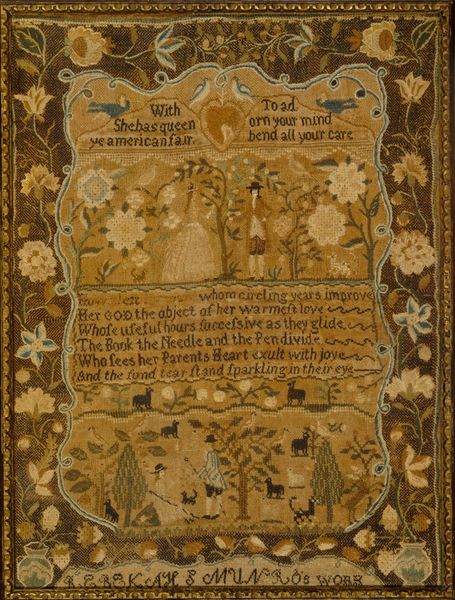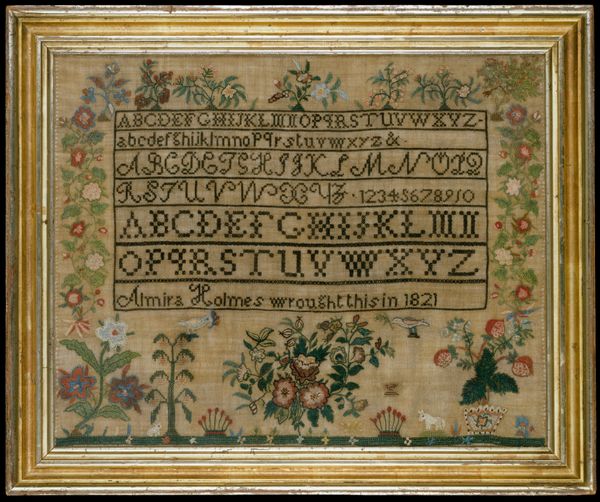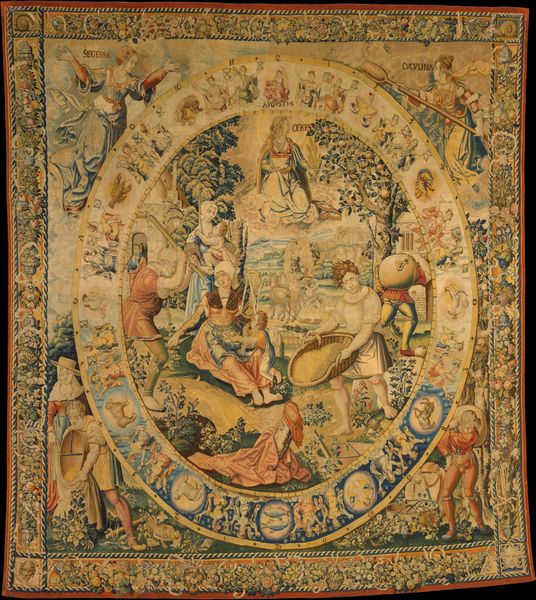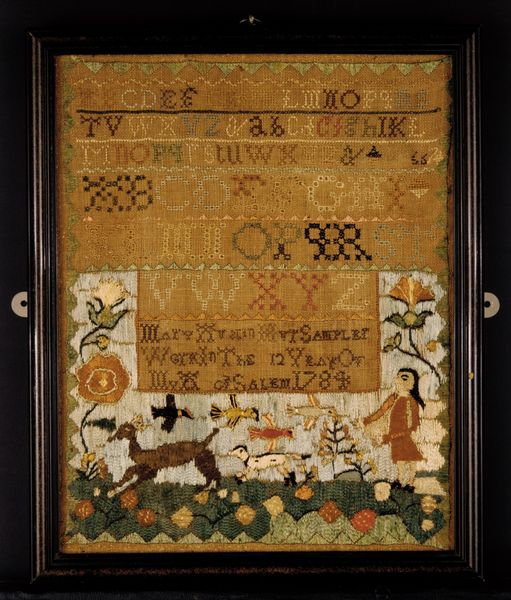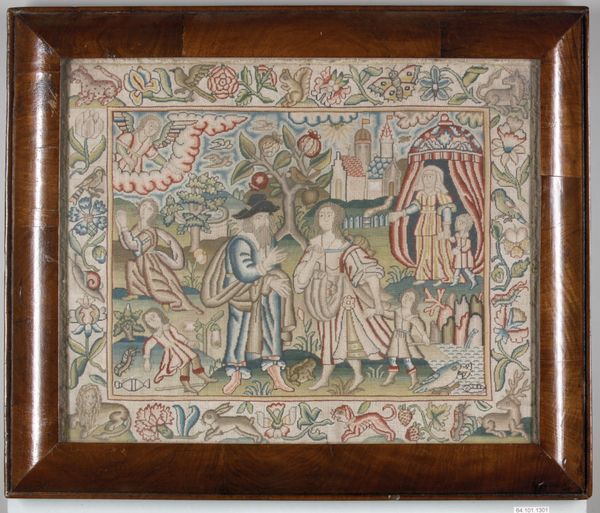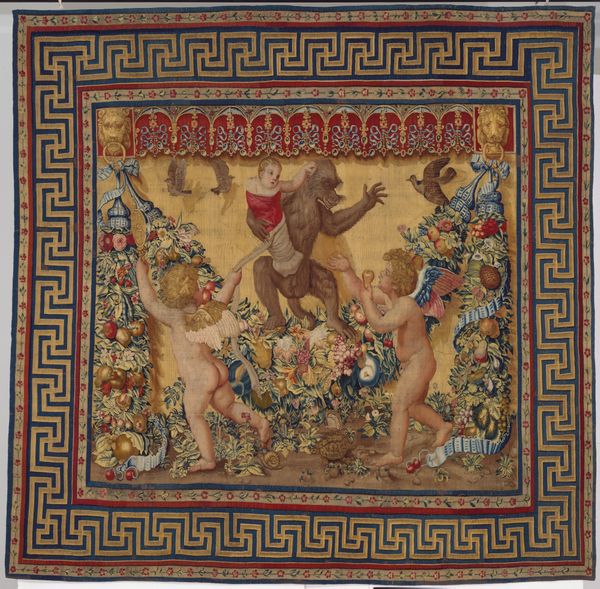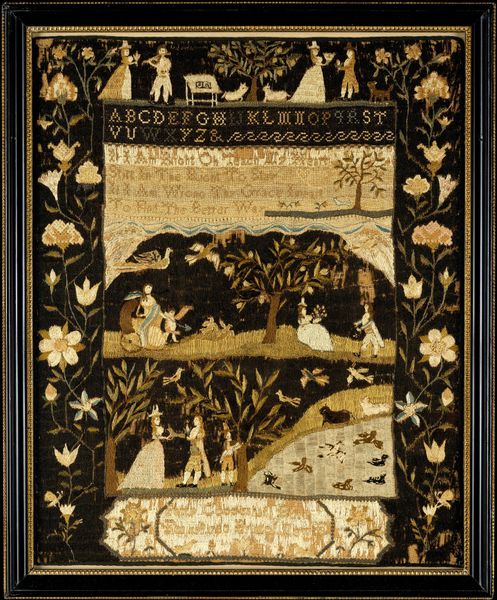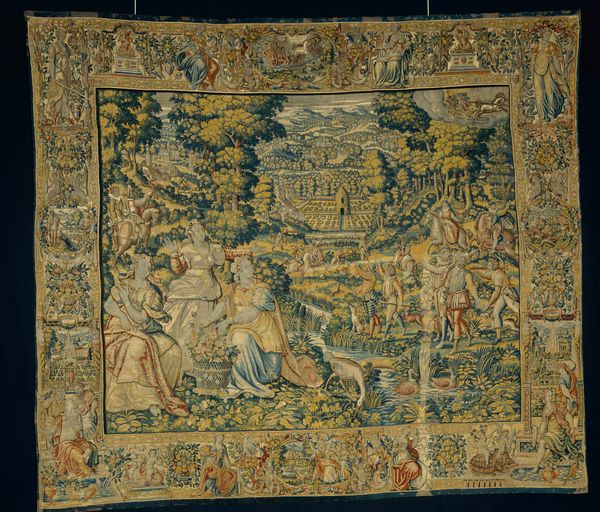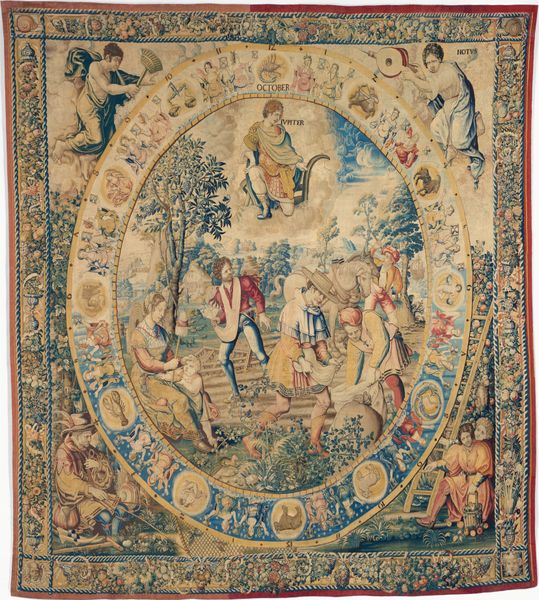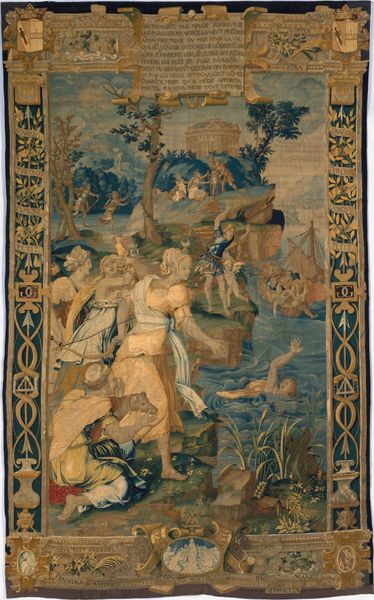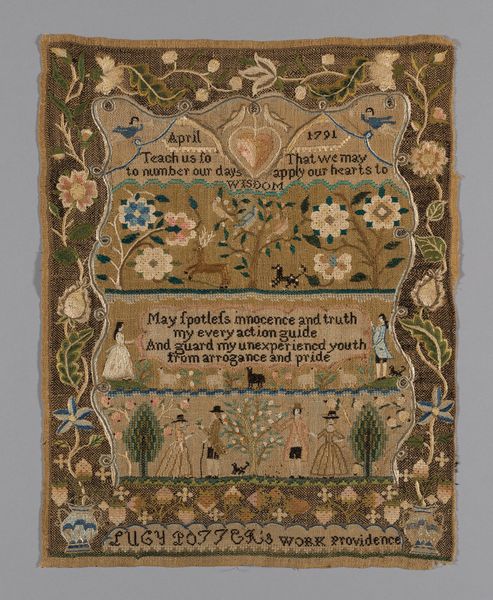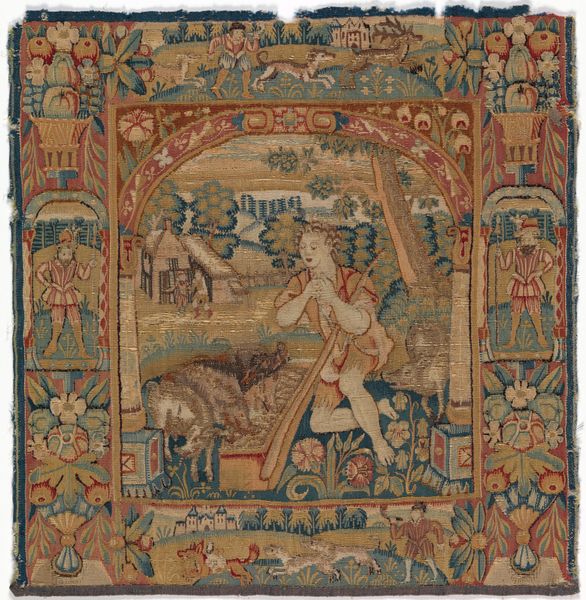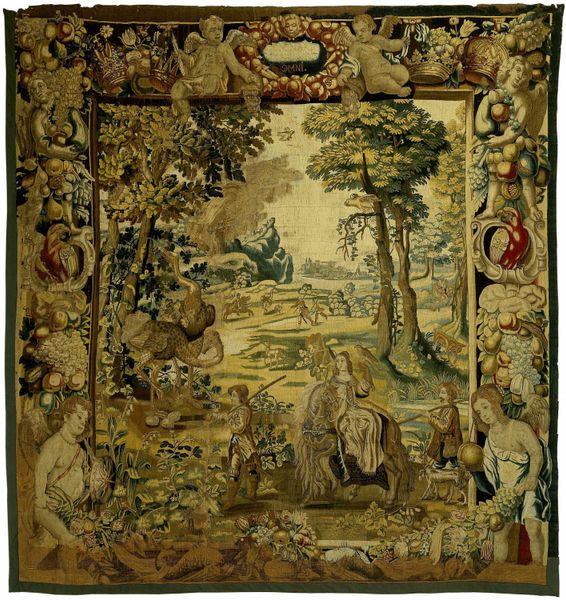
#
sandstone
#
treasure map
#
toned paper
#
dereliction degradation
#
animal
#
flower
#
tea stained
#
carved into stone
#
earthy tone
#
men
#
wooden texture
#
united-states
#
brown colour palette
#
watercolor
Dimensions: 16 1/2 x 17 1/4 in. (41.9 x 43.8 cm)
Copyright: Public Domain
Editor: So, this Embroidered Sampler from 1766 by Rebekah White, at The Met, really strikes me. It's not just decorative; it's like a whole world stitched onto fabric. I'm curious, what stands out to you when you look at this? Curator: I'm immediately drawn to the labor and materials embedded within this seemingly simple piece. This isn’t just needlework; it’s a testament to the maker's skill and the accessibility – or lack thereof – of resources at the time. Consider the dyes used, likely derived from locally sourced materials or traded goods. What does the presence of these materials suggest about Rebekah's social standing and access to global trade networks? Editor: That’s interesting! I hadn't really considered the economics of it. It looks so... quaint. Are you saying the act of creating this itself was a statement? Curator: Absolutely. It challenges our contemporary notion of 'art' as solely residing in painting or sculpture. Think about the time invested – the repetitive motions, the mastery of technique passed down through generations. How does understanding this process challenge our hierarchy between fine art and craft? Editor: It does make me think differently about it. Seeing it as labor… as a process informed by access and skill. So, the sampler isn’t just a decorative object, but it's a kind of historical record, isn't it? Curator: Precisely. The materiality speaks volumes about the society that produced it. And who benefitted, materially, from its creation? Considering that White's sampler is housed in the Met, is there also some irony in thinking of how this ‘domestic’ labor comes to be framed and valued within an institution of high art? Editor: Wow. I’ll never look at embroidery the same way again. Seeing the sampler through the lens of material and production opens up so many questions. Thank you. Curator: Indeed. It’s about understanding that even the most seemingly simple object holds layers of meaning when you examine its materiality and context of creation.
Comments
No comments
Be the first to comment and join the conversation on the ultimate creative platform.
